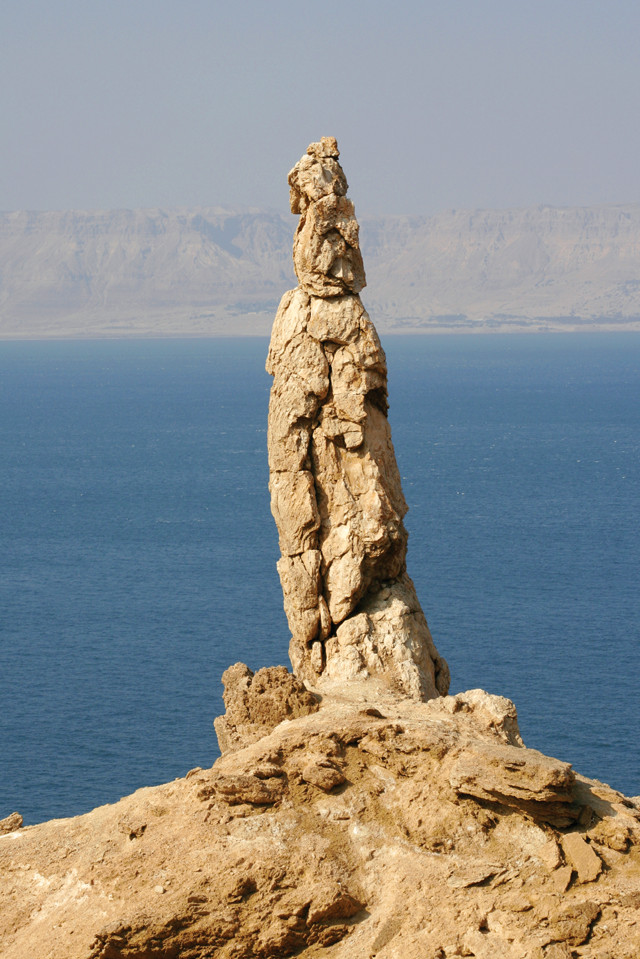
by Sam Lemonick Thursday, June 7, 2018

This salt pillar on Mount Sodom is nicknamed Lot's Wife, a reference to the biblical story of the destruction of Sodom and Gomorrah. Credit: ©iStockphoto.com/Сергей Пономарев
The name of the Dead Sea’s Mount Sodom comes from the biblical story of Sodom and Gomorrah. The Old Testament says God destroyed the cities with fire and “flaming smoke” for the sins of their inhabitants. God allowed Lot and his family to flee the destruction. But Lot’s wife disobeyed God’s orders and was turned into a pillar of salt. Mount Sodom is made almost entirely of halite — sodium chloride — and among the formations near the Dead Sea is a pillar known as Lot’s Wife.
Geologists think nature may have helped inspire the story.
There are multiple scientific theories to explain the events in the Bible. One possibility is that an earthquake in the seismically active Dead Sea region destroyed Sodom and Gomorrah. In a variation of this idea, climate change may have brought a drought to the area — described as once-fertile but barren after God’s destruction — and an earthquake was the final blow that ruined an already crippled society. Another explanation is that an earthquake caused a flood that wiped out the cities. One problem with all of these ideas is that they do not entirely account for the Bible’s description of fire and brimstone.
For many, the fire raining from the sky and the “dense smoke rising from the land, like smoke from a furnace” that Abraham sees in the aftermath, suggest a volcano was the culprit. But there’s little evidence of volcanic activity near the Dead Sea. Therefore, some researchers think a more plausible location of Sodom and Gomorrah is southern Syria, where an eruption did occur at a time when the cities are thought to have existed, around the early or middle Bronze Age.
In Syria, southwest of Damascus, large basaltic flows date to within a millennium of the presumed age of the biblical destruction of Sodom and Gomorrah. The flows originated from volcanoes along the Dead Sea transform fault system. Buried under one flow are two settlements with dwellings and numerous animal bones. Large gravesites near the lava are also consistent with a catastrophe. These findings and the paucity of archaeological evidence tying humans to the Dead Sea area at this time make a Syrian location for Sodom and Gomorrah more likely. Scholars, however, now think the story is an amalgamation of real places and occurrences rather than a single historical event.
© 2008-2021. All rights reserved. Any copying, redistribution or retransmission of any of the contents of this service without the expressed written permission of the American Geosciences Institute is expressly prohibited. Click here for all copyright requests.